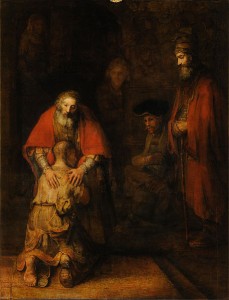Dutch Master Rembrandt and His Most Famous Works
Today is Rembrandt’s 407th birthday!
Born Rembrant Harmenszoon van Rijn in 1606, he is the most celebrated Dutch artist and is considered as one of the greatest painters in European art history. Most of his masterpieces are self-portraits, portraits of other artists, and depictions of religious and historical themes. Art experts claim that Rembrandt was able to create more than 600 paintings, 400 etchings, and 2,000 drawings, but these figures are not certain.
Here are some of Rembrandt’s most famous works:
The Return of the Prodigal Son. This is an oil on canvas painting finished circa 1669. It is one of Rembrandt’s final works. The Return of the Prodigal Son depicts a parable from the Bible about a prodigal son returning to his father after wasting his inheritance. In the painting, you’ll notice the ragged state of the son’s clothing, kneeling and repentant in front of his father who was garbed in rich clothing. The expressive lighting and coloring in the painting effectively evoke repentance, compassion, and forgiveness.
The Anatomy Lesson of Dr. Nicolaes Tulp. Rembrandt was commissioned to paint this group portrait, The Anatomy Lesson of Dr. Nicolaes Tulp. The painting portrays a group of surgeons, surrounding a table while studying a corpse. Specialists have commended Rembrandt for the accuracy of the muscles and tendons of the corpse’ dissected arm. Rembrandt was 26 when he created this painting. The painting is displayed in the Mauritshuis museum in The Hague, the Netherlands.

Danaë. Rembrandt portrayed Danaë, the mother of Perseus in Greek mythology. The 1636 painting shows his interpretation of the myth where Danaë waits for Zeus who impregnated her. It is a life-size painting, measuring 185 cm × 203 cm. Danaë is housed in the Hermitage Museum, St. Petersburg, Russia.
Jacob de Gheyn III. Jacob de Gheyn III is a portrait of one of Rembrandt’s contemporaries who was a Dutch Golden engraver. The painting measures 29.9 x 24.9 centimeters and because of its small size, it has been stolen four times since 1966. It is called “takeaway Rembrandt” due to the numerous theft incidents, the most recorded of any painting.
Belshazzar’s Feast. Belshazzar’s Feast is a 1635 painting portraying the Biblical story of Belshazzar and the writing on the wall. The setting is at a banquet wherein the characters show alarm, surprise, and amazement as they look at the handwriting on the wall. Rembrandt effectively used the technique called Chiaroscuro, wherein he manipulated light and shadow to give contrast and create volume and give a three-dimensional effect on objects.
The Night Watch. The Night Watch is the best known painting housed in the Rijksmuseum, Amsterdam, the Netherlands. The painting was commissioned by Captain Frans Banning Cocq who was one of the main characters in the artwork. It is widely known for its size (11.91 ft × 14.34 ft), effective use of Chiaroscuro, and perception of motion.
Image source: www.wikipedia.org
